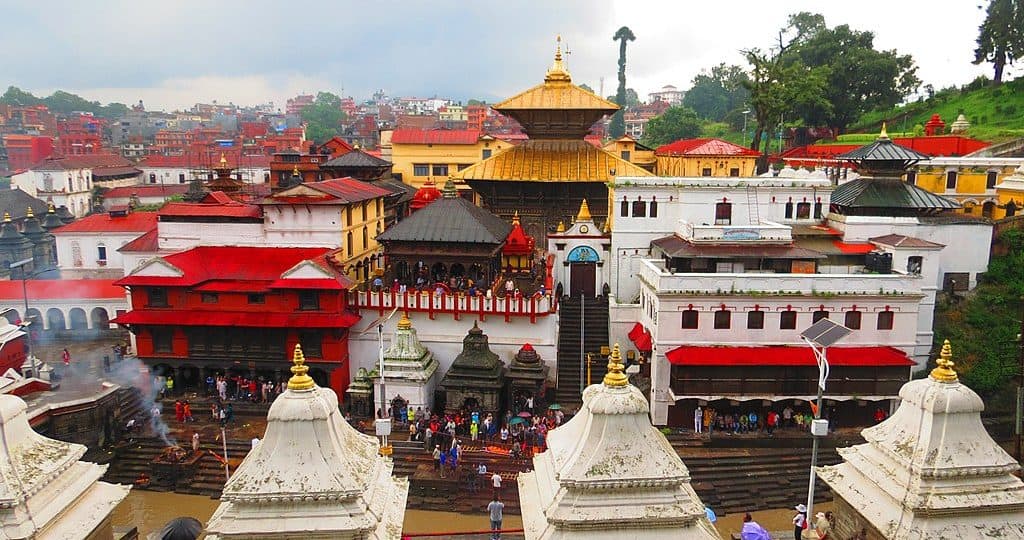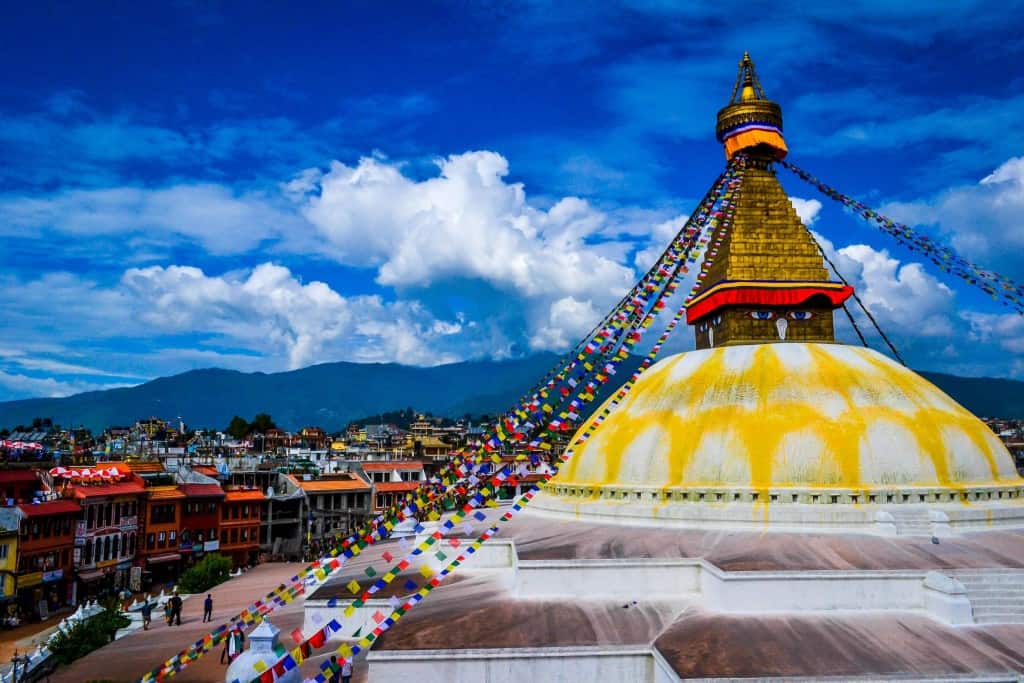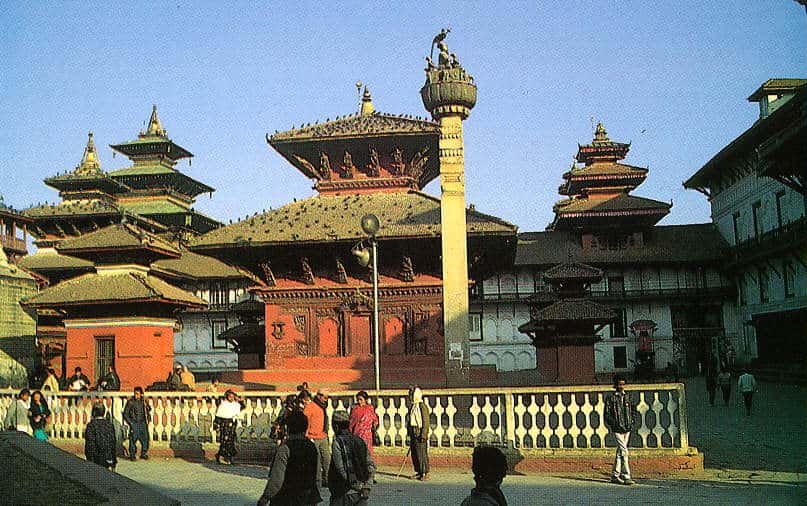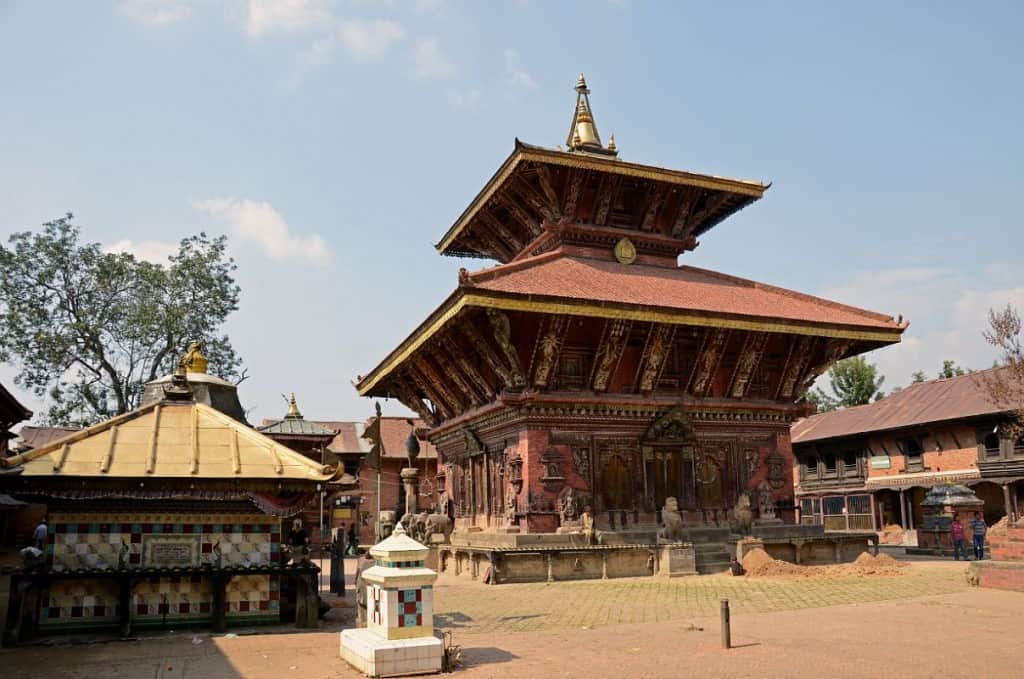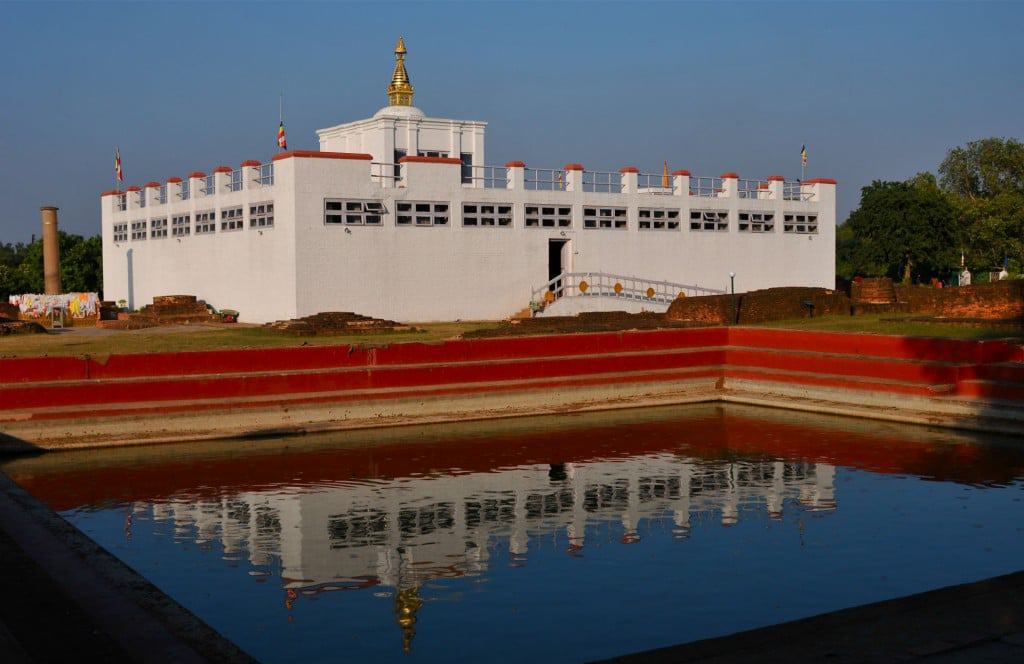Nepal is a multilingual and multicultural country that preserves hundreds of cultural heritages, emphasizing the importance of cultural heritage of Nepal.
This country, known throughout the world as the home of Mount Everest and Lord Buddha is an intricate garland of the various ethnicity and caste of people who have inhabited the land for millennia.
The country is ruled by diverse dynasties like the Kirant, Lichchhavis, Mallas, and Shah – all with their own distinct cultures and architectures. And these rulers have left various religious, cultural, architectural and natural heritage of Nepal.
These historically important patrimonies provide a glimpse into the rich art and culture of the country and have, therefore, many of sites has been placed under the World Heritage list by UNESCO.
A visit to Nepal is incomplete without witnessing at least some of these magnificent sites that reflect the rich national heritage of Nepal.Here is a short introduction to those that simply have to be on top of your list of travel destinations.
Out of the top ten UNESCO world heritage sites in Nepal, seven are situated inside the Kathmandu valley, featuring temples, palaces, and other architecturally important monuments.
Table of Contents
- #1: Boudhanath Stupa
- #2: Swoyambhunath Stupa – Cultural Hertitage Of Nepal
- #3: Kathmandu Durbar Square
- #4: Bhaktapur Durbar Square – Cultural Nepal
- #5: Patan Durbar Square
- #6: Pashupatinath Temple – Cultural heritage of Nepal
- #7: Changunarayan Temple
- #8: Chitwan National Park
- #9: Sagarmatha National Park
- #10: Lumbini – Birthplace of Buddha in Nepal
#1: Boudhanath Stupa
With its massive mandala, Boudha – situated to the northeast of the capital city – is the largest spherical Stupa in Nepal. It is the most important shrine for Tibetan Buddhists who visit the site frequently along with other Hindu pilgrims. And, it is also the single largest Chorten in the world.
Made up of large amounts of gold, every part of the monument’s architecture has an abstract spiritual meaning. Surrounded by Tibetan monasteries, souvenir shops, restaurants, and hotels, Boudhanath Stupa is one of the most famous tourist destinations in Nepal, highlighting the importance of national heritage in Nepal in points.
Many visitors experience spiritual peace as they do their ritual circumnavigation of the dome beneath the peaceful wisdom eyes of the Buddha that gaze out at them from within the gilded central tower.
Want more information? Send us your query, and our experts will get back to you within 24 hrs.
#2: Swoyambhunath Stupa – Cultural Hertitage Of Nepal
Situated in the western part of Kathmandu, Swoyambhunath is one of the most distinct, ancient, and important Buddhist pilgrim sites in Nepal. It highlighting Nepal’s cultural heritage.
Indeed it is among the most fascinating architectural jewels in the world. The Great Stupa is said to have been built around 250 B.C. Its white dome symbolizes a spotless gemstone of Nirvana which is an epitome of a typical Buddhist architectural style.
A religiously significant place for both the Newari and Tibetan Buddhists, the complex consists of a stupa plus a number of shrines, temples, and statues (that make up the original monuments) and the Tibetan monastery, library, and museums (that make up the new).
Also, known as the ‘monkey temple’ because of the hundreds of monkeys loitering around the hill, the main Stupa is a dome at the base covered by a cube structure covered by a toran, while above that is the Gajur. A number of shrines, statues, and artifacts adorn the stupa, with a series of praying wheels also around the dome.
#3: Kathmandu Durbar Square
Kathmandu Durbar Square, one of the three Durbar squares in the Kathmandu valley, is a cluster of ancient temples, palaces, courtyards, and streets. Situated in the heart of the capital, the site is surrounded by monuments showing off the cultural and architectural skills of the Newari craftsmen over the past centuries.
Surrounded by various courtyards, the plaza itself is a complex of various temples and palaces made during the Malla and Shah dynasties. Adopted as the royal palace by the first Shah King after he conquered Kathmandu, the square is still considered important as the location of the coronation ceremony of the king of Nepal.
Visiting the museums is a great way of taking a peek into the former ruling dynasties, their lifestyles, cultures, and many other aspects of bygone eras.
The most fascinating part of the square, however, is the Kumari Chowk, the residence of the living goddess Kumari, a young girl chosen as the reincarnation of the Hindu goddess Durga.
#4: Bhaktapur Durbar Square – Cultural Nepal
The plaza in front of the Bhaktapur palace is another site listed as one of the World Heritage sites in Nepal. The complex consists of the four main squares, namely: Durbar Square, Taumadhi Square, Dattatraya Square, and Pottery Square. It is the most spacious of all the Durbar squares due to the loss of various monuments during the earthquake of 1934.
The main attractions of the square, however, are more intricate and artistic. These include the 55-windowed palace, the Lion’s Gate, the Golden Gate, the Nyatapola Temple, and the Bhairavnath Temple, showcasing many more exquisite examples of the artwork and architectural skills that contribute to the rich cultural heritage in Nepali.
#5: Patan Durbar Square
This Durbar square situated in Patan comprises the palace of the Malla kings of Patan. The complex consists of a number of temples along with large bells, idols, and statues facing towards the main palace. The courtyard floor, tiled with red bricks, and the old Newari houses in the surrounding areas, give the complex a very ancient cultural vibe.
The main attraction of the square is Krishna Mandir, a three storey temple with beautiful wooden carvings and twenty-one golden pinnacles, as well as a Bhimsen temple with its three interconnected golden windows, and the Taleju Bhawani temple with its five storey’s and triple roofs.
#6: Pashupatinath Temple – Cultural heritage of Nepal
Pashupatinath, the most sacred of the Hindu temples, is situated on the banks of the Bagmati River to the northeastern side of Kathmandu, representing a significant aspect of the cultural heritage of Nepal in Kathmandu.
It consists of temples, ashrams, inscriptions, idols, and images of various deities built over centuries by different rulers and devotees.
Serving as the seat of the national deity Lord Shiva, the temple is visited by over 700,000 devotees during the Mahashivaratri festival in the month of Falgun. The Pashupatinath temple courtyard houses about 235 small temples and shrines.
The main temple housing the sacred Shiva Linga is located in a fortified complex and is built in Nepalese pagoda style with cubic construction, beautiful wooden carvings, and roofs of copper covered with gold. The temple has four doors with a golden pinnacle that gives it a glorious look.
One of the main pilgrim sites for Hindus all over the world, the temple complex is a sacred site of Hindu religion and culture.
#7: Changunarayan Temple
The oldest temple of the Kathmandu valley, Changunarayan is a fine example of the stone, wood and metal craftwork to be found in the valley.
The temple lies atop a hill and is dedicated to Lord Vishnu, with the shrines of Lord Shiva, Chhinamasta, Kileshwor, and Krishna located in the courtyard of the main temple. A number of statues and inscriptions are found in the walls and carvings of the complex.
They feature gods, their incarnations, and various other religious symbols. There are museums in the area that house extremely rare historical, artistic, and cultural objects and photographs.
A true gem from the Lichhavai period (fourth to ninth centuries), Changunaraya Temple is covered in stone, wood, and metal carvings which are found throughout the courtyard surrounding the main temple. This is a living museum that displays the time of 6th century BC.
#8: Chitwan National Park
Chitwan National Park is located 120 miles southwest of Kathmandu and is known as Nepal’s oldest natural heritage site. The journey takes around 5-6 hours by bus from Kathmandu, or you can opt for a 20-minute flight to Bharatpur Airport, followed by a 40-minute drive to the park.
Chitwan is not just a sanctuary for the endangered one-horned rhinoceros and the regal Royal Bengal tiger; it’s a living, breathing testament to biodiversity. Here you can venture on a thrilling jeep safari, weaving through the wilderness, or glide gently down the Rapti River on a canoe, where surprises await around every bend.
Chitwan is like a beautiful painting of nature and culture, where the unique lifestyle of the Tharu community adds a delightful tune to your adventure. It’s not just a place to visit; it’s an immersive journey into the heart of Nepal’s wild beauty, a place where every moment is a celebration of nature’s wonders.

#9: Sagarmatha National Park
Sagarmatha National Park is situated in the northeastern part of Nepal and it is home to some of the world’s highest mountains, including the iconic Mount Everest. Trekking enthusiasts can indulge in the Everest Base Camp trek, an adventure that showcases the park’s stunning beauty.
It’s not just a park; it’s a sanctuary of rare Himalayan herbs, vibrant flowers, and elusive wildlife like the iconic Red Panda. Whether you choose to fly to Lukla and trek through the rich forests or take a scenic drive to Jiri, the adventure unfolds against a backdrop of snow-capped peaks and traditional Sherpa hospitality.
Sagarmatha National Park shows us how nature and the people who live here can endure and do well. It’s like a living proof of how both the land and the local communities can succeed in these high-altitude areas.
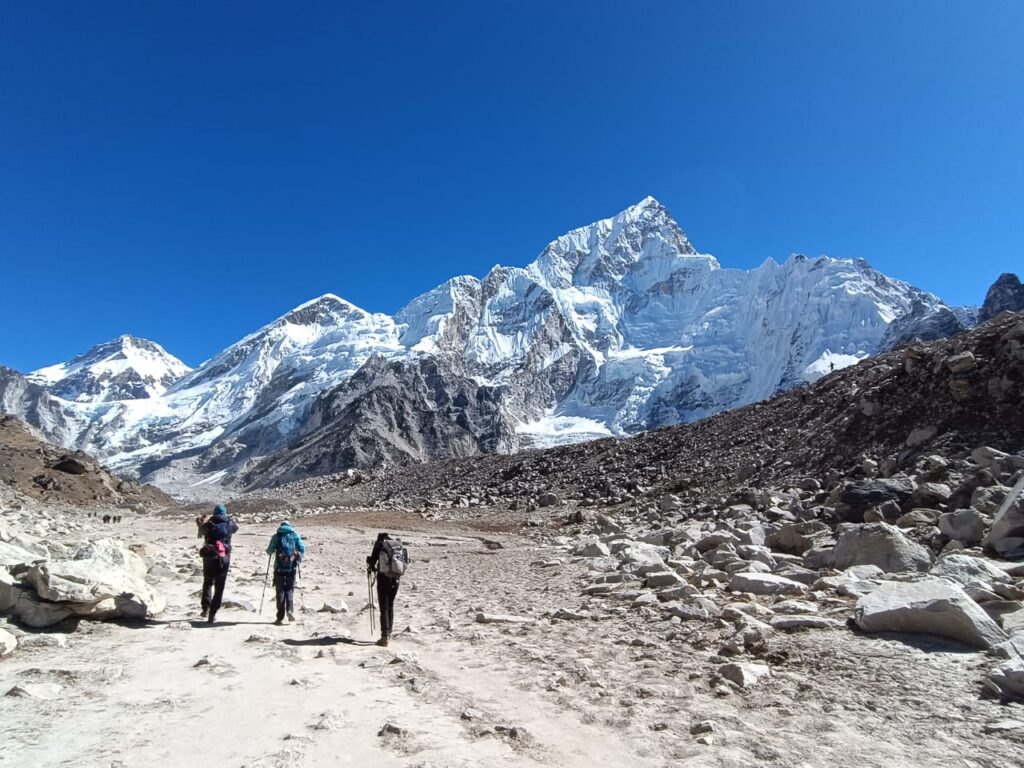
#10: Lumbini – Birthplace of Buddha in Nepal
Out of all the major attractions and UNESCO cultural heritages of Nepal, the most famous one would have to be Lumbini since it is, after all, birthplace and the home of the Lord Buddha, the preacher of peace to the whole world.
The site of Lumbini comprises a number of temples, monasteries and museums; some that date back centuries ago, and some that are in the middle of construction. The historic site is 4.8 km in length and 1.6 km in width and contains the ruins of ancient monasteries, a Bodhi tree, an ancient sacred bathing pond, and the Ashoka pillar.
This holy site can be reached by a nine-hour drive from Kathmandu, and here you can enjoy the peaceful and serene ambiance of the area while witnessing the birthplace, first steps, and other life experiences of Lord Buddha.
These few heritages that have settled in the land of Nepal showcase the importance of cultural heritage, reflecting ancient history, art, culture, and traditions during the time of our forefathers. These heritages are definite to give you a clearer glimpse of the socio-historic condition of Nepal.
Want more information? Send us your query, and our experts will get back to you within 24 hrs.

Madhav started working as a porter in 2001 and then moved on to work as a trekking guide. After working in the trekking and tourism industry for eight years, he co-founded Mosaic Adventure in 2009.
Madhav has trekked to most of the trekking destinations in Nepal, including Everest Base Camp Trek, Annapurna Base Camp, Annapurna Circuit Trek, Poon Hill Trek, Jomsom Muktinath Trek, Indigenous Peoples Trek, Langtang Valley Trek, Mardi Himal Trek, and all of the day hikes around Kathmandu.
He has also extensively traveled to other countries such as Australia, the USA, the UK, France, Hong Kong, Japan, China, the Philippines, the UAE, Saudi Arabia, Bahrain, Thailand, Turkey, and India. Madhav is the one who answers most of your questions about trekking and tours and helps to plan your trip by giving a personal touch.

